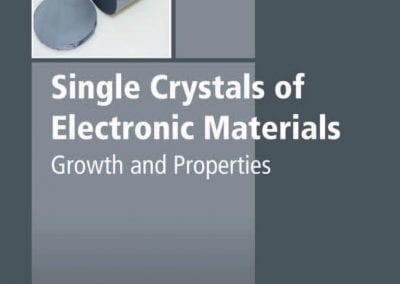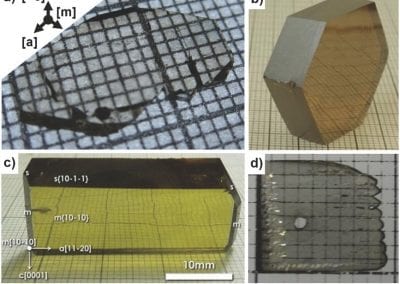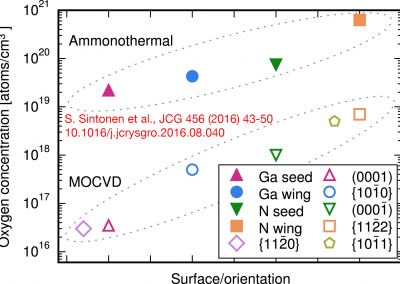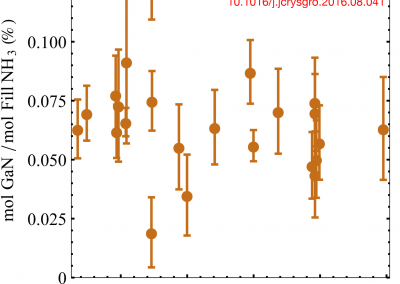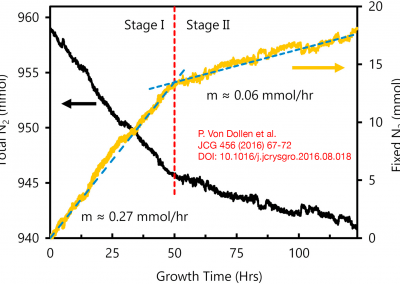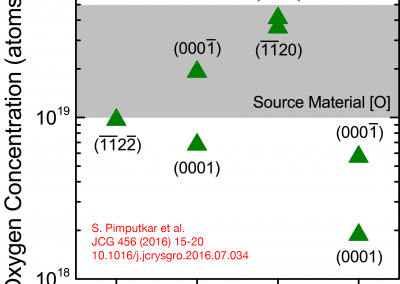Basic ammonothermal GaN growth in molybdenum capsules
Journal of Crystal Growth, 456 (2016) 15-20
DOI: 10.1016/j.jcrysgro.2016.07.034
Funding: SSLEEC, MRL (DMR 1121053)
Single crystal, bulk gallium nitride (GaN) crystals were grown using the basic ammonothermal method in a high purity growth environment created using a non-hermetically sealed molybdenum (Mo) capsule and compared to growths performed in a similarly designed silver (Ag) capsule and capsule-free René 41 autoclave. Secondary ion mass spectrometry (SIMS) analysis revealed transition metal free (<1×1017 cm−3) GaN crystals. Anomalously low oxygen concentrations ((2–6)×1018 cm−3) were measured in a {0001} seeded crystal boule grown using a Mo capsule, despite higher source material oxygen concentrations ((1–5)×1019 cm−3) suggesting that molybdenum (or molybdenum nitrides) may act to getter oxygen under certain conditions. Total system pressure profiles from growth runs in a Mo capsule system were comparable to those without a capsule, with pressures peaking within 2 days and slowly decaying due to hydrogen diffusional losses. Measured Mo capsule GaN growth rates were comparable to un-optimized growth rates in capsule-free systems and appreciably slower than in Ag-capsule systems. Crystal quality replicated that of the GaN seed crystals for all capsule conditions, with high-quality growth occurring on the (0001) Ga-face. Optical absorption and impurity concentration characterization suggests reduced concentrations of hydrogenated gallium vacancies (VGa−Hx). (Read full text)





